Ribera y Rueda, Castles and Lions: Home of Live-Fire Cooking
Courtesy of James Beard Award-winning writer Laura Werlin.

Enter to Win a Trip to Spain’s Most Prestigious Wine Regions. Presented by Ribera y Rueda and DrinkRealSpain.com
Enter to win a trip for two to Ribera y Rueda in 2023 (Click here). Here’s your opportunity to experience the best bodegas (wineries), tour with winemakers and taste their best bottles while taking in historical sites. Stay in luxurious accommodations, partake in late lunches, tapas crawls and fancy dinners.
The grand prize is a round trip for two from an airport in the U.S. to Madrid, ground transportation, five nights lodging, tours and meals while in Spain. Five runner-up prizes will be awarded gifts from DrinkRealSpain.com.
Castles & Lions, White & Red Wines
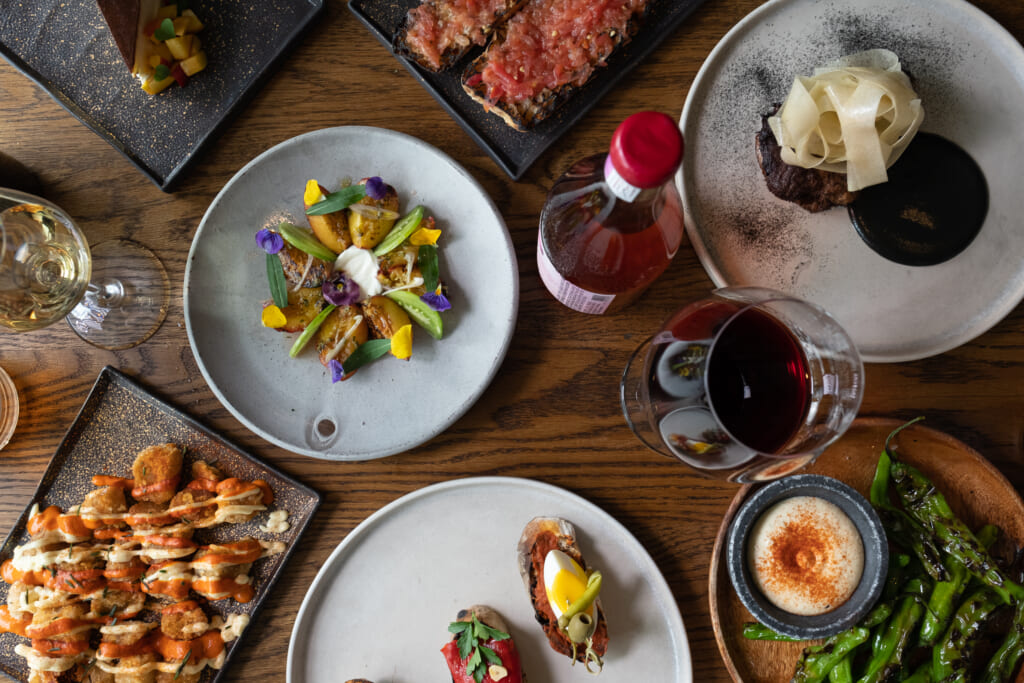
Quick. What images come to mind when you think of France? Long, languorous meals, the arts, fashion, croissants, and maybe a picturesque countryside filled with sunflowers and lavender too? Italy evokes images of its own. Pasta imaginings and the Pope go without saying. So do Ferraris, Michelangelo, Parmigiano Reggiano, gelato, truffle dogs searching the Tuscan hillsides, and the spectacular canals of Venice.
Whether or not we have visited either of these countries, we have impressions of them. Over the years, storytellers and adventurers have crossed the ocean and shared interpretations of their food, culture, and the arts. Those are now woven into the fabric of American culture, to the point where we can tick them off like flashcards, so familiar they are.
Now think about two of Spain’s most prestigious regions for red and white wines – Ribera del Duero and Rueda. It would be understandable if no specific images come to mind, at least not yet.
But these two wine regions in northwest Spain are well on their way to establishing reputations as vivid as those of France and Italy. This transformation is being led by these regions’ winemakers who are producing world-class Tempranillo and Verdejo respectively that are slowly but surely making their way to the American table along with the foods and stories that go with them.
Strength And Grace
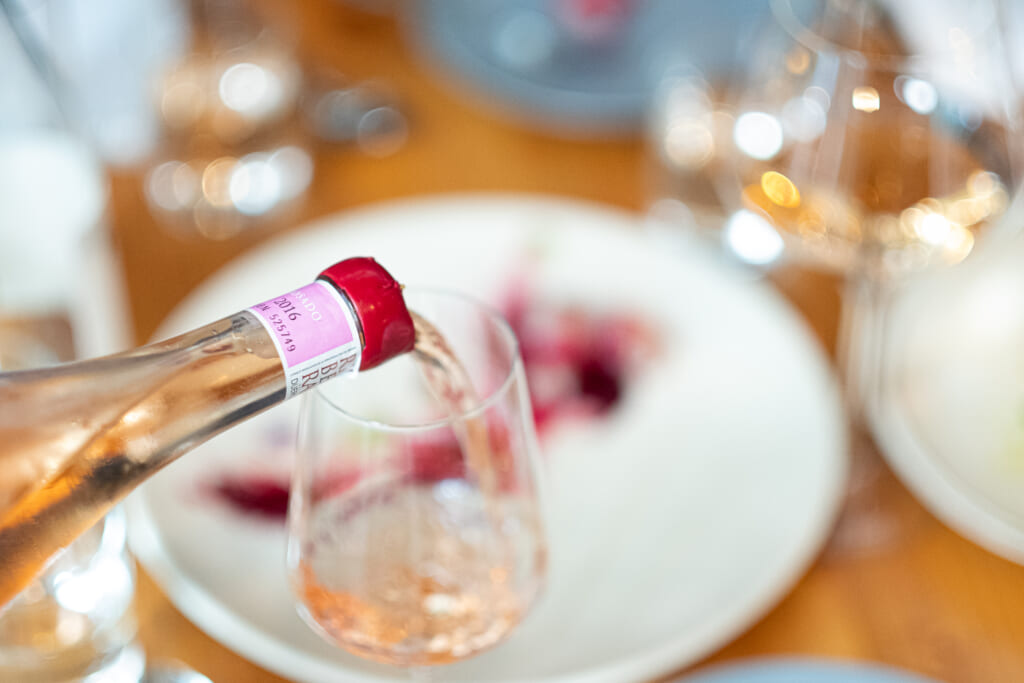
Ribera del Duero and Rueda are set in the larger region of Castilla y León. Just as the name implies, Castilla y León is the land of castles and lions, a place where history, strength, grace, majesty, and grandeur combine to create a region with gravity and meaning, camaraderie, and vibrant tables. The flag of Castilla y León bears images of castles and lions – the coat of arms and symbolism of a region with a sense of purpose and prestige.
Of the two wine regions, Rueda is home to Verdejo, the world’s next great white wine varietal and a region known for having the most female winemakers in Spain. It is most closely aligned with the lion (León) – or lioness if you will. The regal animal shares the flag with the symbolic castle (Castilla) rising over the countryside including Ribera del Duero, home to a very distinctive style of Tempranillo – the varietal grown in the vineyards here.
The landscape in these two regions, located just two hours north of Madrid, represents a bit of a paradox. It is at once harsh, extreme, and ostensibly inhospitable to anything that grows. Dig a little deeper, though, and you’ll find vines that have been producing Spain’s number one selling white wine (Verdejo) and noble red wine (Tempranillo) for over a century.
The Spirit Of The Lioness, The Heart of A Lion
Rueda’s Verdejo is a sleek white wine that, with its grace and light-footedness, calls to mind its animal spirit. Because it is made in three distinct styles – joven or young, lees-aged (to bring creaminess and texture to the wine), and oak-aged (to add structure and cellar-worthy qualities) – it is at once unpredictable and exciting, graceful, and balanced. The elegance of these wines may make it no surprise that women lead one-third of the wineries here.
The animal reference doesn’t stop there. When choosing a style of Verdejo and the foods to go with it, one need only invoke the stately image of the lion at different ages to help make those choices. For example, a joven-style Verdejo and a lion cub share common characteristics – light on their feet, playful, sly, maybe coy, and bright. A table set with fresh goat cheeses, crudo, fish tacos, or a citrusy salad, or with highly aromatic dishes with minty herbs would be the wine’s perfect companions.
The adolescent lion, its power still waiting to be unleashed, will signify a slightly richer wine style destined for more daring cuisine such as conservas, meaty olives, triple-crème, and mountain-style cheeses, and grilled fish dishes. These foods call out for the creamy, mouth-filling lees-aged Verdejo that pairs with more complex dishes, though still ones with balanced acidity.
Once fully matured, the adult lion reaches its strength and brings forth complexity during aging just as an oak-aged, world-class Verdejo will do. To go with this style of wine, consider more full-flavored fare like a hearty vegetable-driven stew, scallops with a rich lemon-butter sauce, an umami-rich roasted chicken, or a dynamic Valencian rabbit and chicken paella.
Well-constructed Verdejo has a reputation for richness, herbal notes, complexity, minerality, and aging potential of 5-10 years. Whether Rueda Verdejo or Ribera del Duero Tempranillo, one rule is shared by both regions: age brings complexity and a path to irreproachable food pairings.
Castles In The Vines
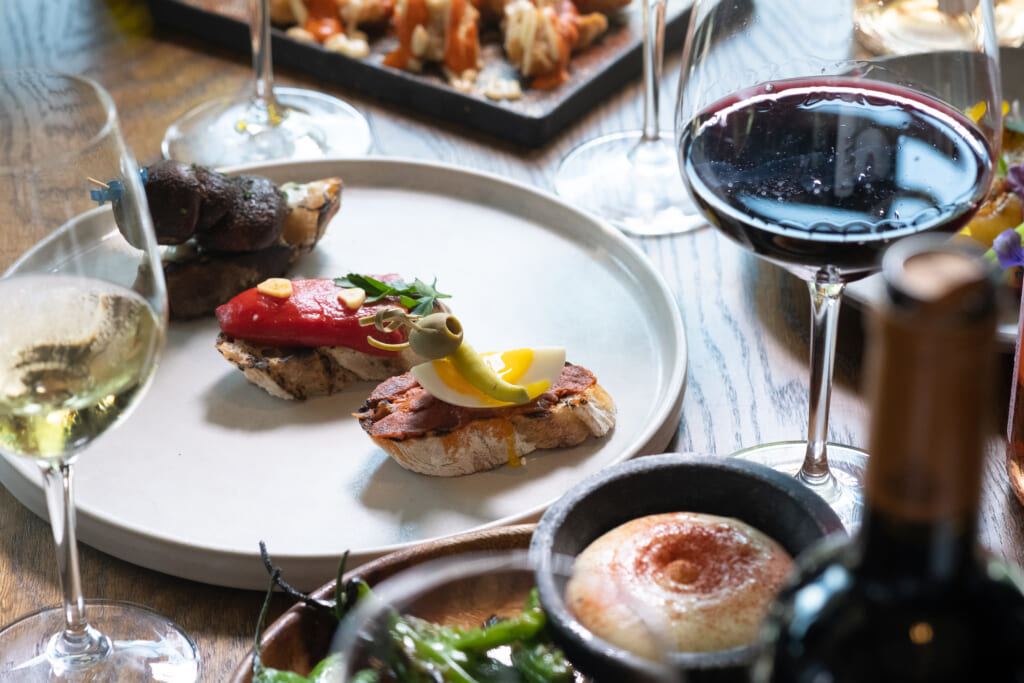
The Ribera and Rueda regions are defined by the Duero River and thousands of years of religion, survival, transformation, and winemaking. The castles in the Ribera del Duero are the physical representations of this. Today, these stately edifices play host to visitors and call to mind the region’s history, strength, power, and determination.
The Tempranillo grown in this part of Castilla y León is not so different. The varietal, known as Tinto Fino locally, is unique in this region because of its ability to survive and adapt in uber-extreme climate conditions. The result shows strength and muscle with an elegance that tempers the wine’s power – a power harnessed only by the winemaker who must make the decision about how much of the grape to express and how much to control. It can be dark and brooding with deep dark fruit and forest flavors or light and layered with fine tannins and a long, memorable finish.
Aging wines in tunnels under castles and in caves is synonymous with Spain. Keeping with this is the desire for fruit-balanced wines combined with distinctive earthy flavors that emerge from these natural aging environments. In the glass, wines from Ribera are a reflection of the earth, climate, and soil in which the grapes grow. So too the barrel and bottle aging that brings complexity and ultimately a path to successful food pairings.
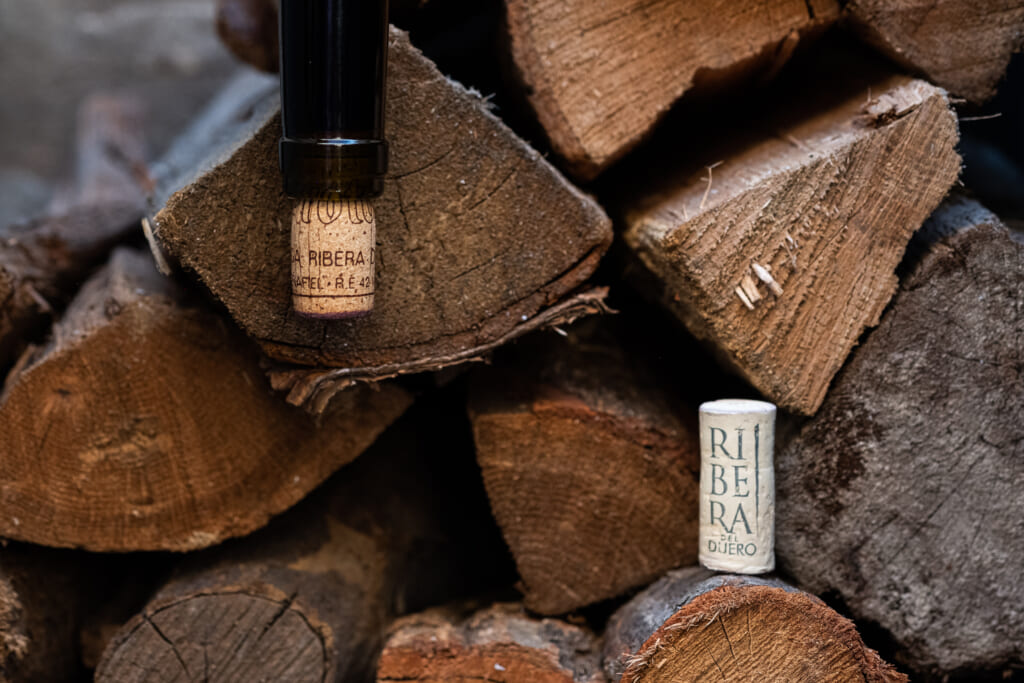
This means that a Crianza – at three years of age, the most youthful representative in the layered landscape of Ribera Tempranillos – pairs with the widest range of dishes like boldly seasoned fish, roasted birds, and lightly smoked and charred proteins with subtle animal notes. Cosecha, another classification for Ribera Tempranillos at all ages, warms up to different levels of spice, vibrant aromatics, heat-induced meat sugars and crusts, umami notes, sauces, cheeses, and patés. Regardless of the complexity of flavor, the wines can conform to dominant spice boxes and cooking techniques.
Production and aging techniques are governed by minimum standards set by the appellation. So-called Reserva wines, aged four years or longer, sit best on the table with foods that have compelling, layered flavors and unctuous textures. Cheeses with a dense, chewy paste (the portion of the cheese inside the rind), sugar-like crystals, and nutty and savory flavors love a Reserva.. Meats love Ribera wines too, especially slow-cooked dishes tinged with hints of smokiness.
Just as castles have layers of history, food dishes have layers of flavor. The more layered the dish, the more likely the longest-aged, most sophisticated wines will go with it. Furthering this notion, when we think about the castles that have stood the test of time – the keepers of history, protection for the king – we can’t help but think of a Gran Reserva – a wine that is aged at least five years. Wines with this type of gravity beg for long-cooked, richly flavored dishes to fill the table. Heat will intensify toasted notes as well as aromatic, earthy, and spicy flavors.
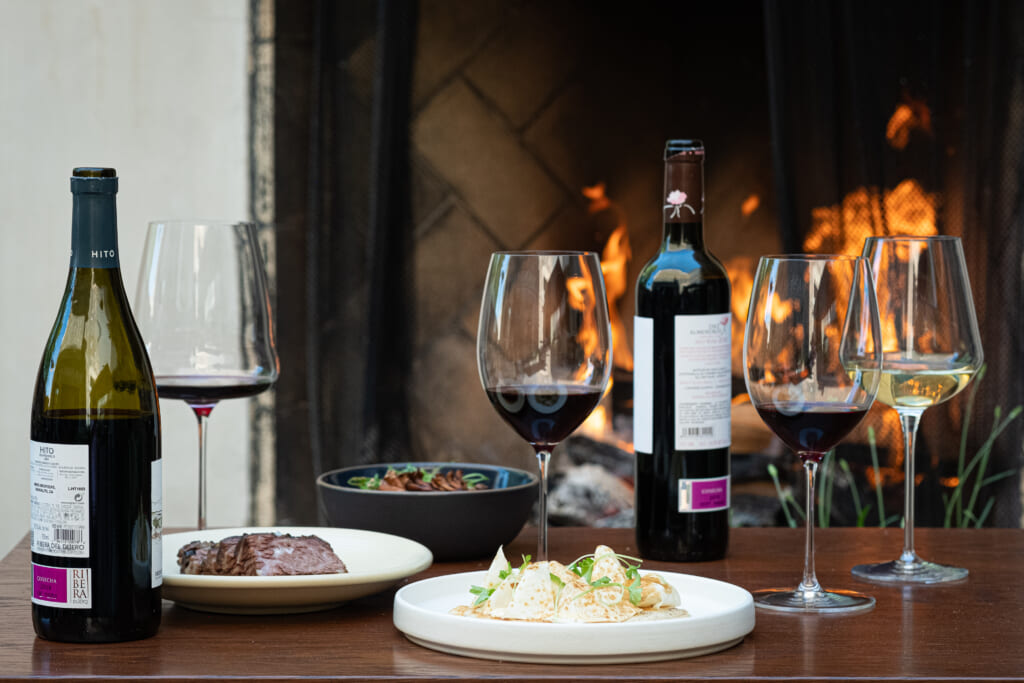
Full-flavored smoke treatments like mesquite render super-rich, unctuous fats and delectable textures that make each experience thrilling. For example, a perfectly roasted baby lamb or lechazo, a specialty of this region, is a perfect combination of time next to a fire, salt, water, and sustenance – the food equivalent of the regal Tempranillo and Verdejo grapes grown here.
Bringing Ribera And Rueda To Life
Now, quick. What do you think of when you think of Ribera del Duero and Rueda? Hopefully, a picture is beginning to emerge – one of castles and lions, Tempranillo and Verdejo. If you didn’t guess already, the trio of Ribera del Duero, Tempranillo, and Castles create the perfect image for remembering the types of foods to match and a sense of place – a way to build your mental flashcards if you will. The same goes for Rueda, Verdejo, and Lions. This is Ribera y Rueda – move over France and Italy, the secret of Spain is out.
Hearth’s Desire – Our Love Affair With Fire
Taking the country comparison a step further, one image neither France nor Italy is likely to evoke is that of life-fire cooking. And yet, in Spain’s Ribera del Duero and Rueda – two areas that get bitterly cold as the sun journeys farther away – people come together in places where a roaring fire is doing more than simply emitting warmth. Its flame is transforming suckling lamb and pig into the local specialties lechazo and cochinillo, each into sizzling fat, tender meat and rich juices. Fire is a key element to tradition in Castilla y Leon. Together with countless other dishes, fire creates a food culture and ambience in which drinking the local wines is as integral to the gathering as air itself.
It is also where you will find the white wine Verdejo and the red wine Tempranillo in glasses around the table. Verdejo especially loves grilled fish and vegetables, and Tempranillo loves wood-fire cooking of all kinds.
Grown in a variety of soil types along the Duero River and at several altitudes, the fight for survival by both Ribera del Duero Tempranillo and Rueda Verdejo translates to wines with an elegance that belies each of their struggle to survive.
Fire’s Early Days In Spain Reaches The World
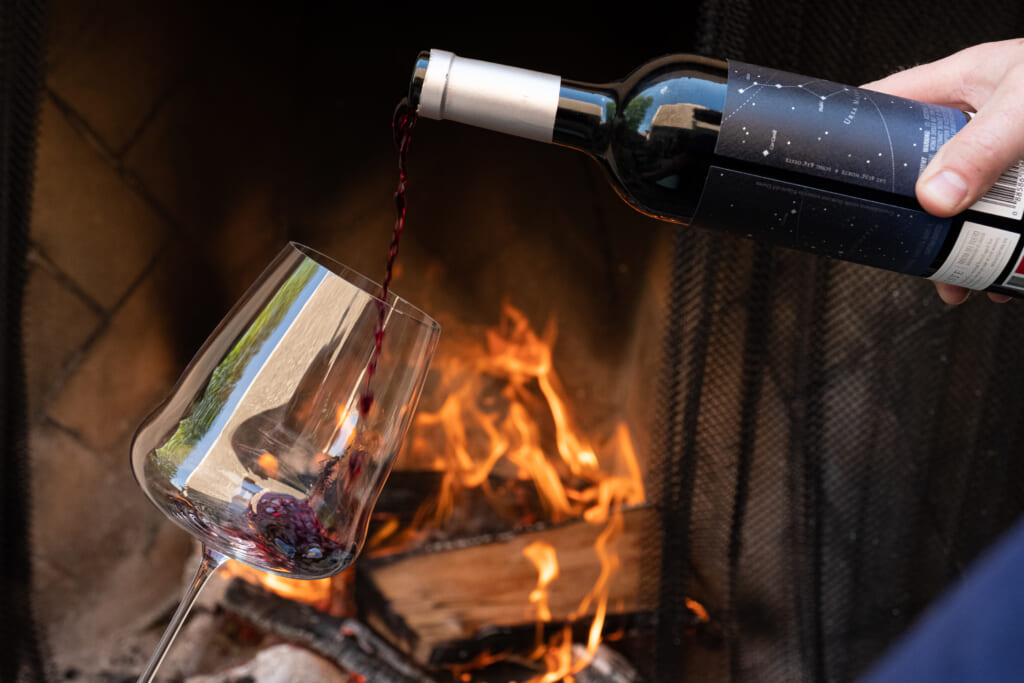
Fire cooking is primal. It not only paved the way for no less than the evolution of humans – the discovery of fire allowed for the cooking of a higher-quality diet of roots, grasses, and animals, which in turn fueled brain size – but throughout time, fires themselves have served another purpose: social gatherings and community. The discovery of controlled fire may have led the hominids – early humans and apes – to gather around fires, stay up later, socialize and establish local culture.
In Spain, fire has played a central role in the food culture, though perhaps no more so than in Spain’s Basque country. Here, fire is no less than the soul itself.
Embodying this is Chef Victor Arguinzoniz (also known as Bittor Arguinzoniz), whose dedication to live-fire cooking continually lands his 33-year-old Michelin-starred restaurant Asador Extebarri on top restaurant lists in the world. As fundamental as fire is to survival, Arguinzoniz elevates it to an art form, converting food into delicious brilliance all with one common tie: fire.
Live-fire cooking methods take several forms in Spain – hoguera or hearth, parilla or grill (or grate), brasa or hot coals, and plancha – a hot plate set over coals. Historically, people in Castilla y Leon’s Ribera del Duero and Rueda regions took a nod from their Basque neighbors and utilized vine roots to create fire fuel. Pilgrims journeying along the Camino de Santiago nabbed quail, wrapped them in grape leaves, and roasted them over the fire. Valencians depended on vineyard and orangewood prunings to fuel paella fires. And so it went – whatever fuel was readily available was gathered and used.
This included the fire fuel the Basque fishermen brought with them to cook with on their ships as well as forage for wherever they landed. One such landing was Argentina, where locals picked up the Basque art of the asador – grill cooking – and made it their own. Indeed, Argentina’s culinary reputation is now inextricably linked to live-fire cooking not just there but in other countries too. By the 1800’s, asador cooking was expanding worldwide as German gemstone prospectors in Argentina became captivated by this technique from South American gauchos. It was only a matter of time before Germans adapted the cooking method in their home country.
At about the same time the Basques reached South America, other Spaniards were landing in the Caribbean. Here, island natives observed these newcomers’ cooking method, which consisted of meat being cooked slowly on a wooden platform set over a flame. The word used to describe this type of cooking came from the Taino, a Caribbean Indian tribe. Their word: barabicu. The Spaniards’ translation: barbacoa. The English word? Barbecue.
Fire Is Community
Thankfully some things never change, and the practice of gathering around a fire is one of those. In fact, the communal draw to fire may be more fundamental to being human than we think. In Latin, the words fireplace or hearth mean focus. When we gather around a fire, that fire is the locus (and focus) of our attention. We are centered, maybe even transfixed.
That glass of wine we may be holding also begs for attention as we remember it too emanates from the ground and follows a journey of its own before reaching our palates. The only difference between wine and the fire that captivates us is that the making of the wine is fueled by desire and the drinking of it fuels desire itself – and maybe a little fire of its own too.
Learn more about Ribera y Rueda on Instagram @RiberayRuedaWine and don’t forget to enter for your free Trip to Spain. Be sure to sign up on Drink Real Spain (it’s free to join) for access to the best wine collections from Spain. Each month, Drink Real Spain hosts a virtual tasting featuring a curated four-bottle collection with wine celebrity Anthony Giglio exploring Verdejo from Rueda and Tempranillo from Ribera. Members of Drink Real Spain are also entered in for a chance to win amazing monthly giveaways.
Now is the time to become an insider at DrinkRealSpain.com and follow @RiberayRuedaWine – Spain’s most prestigious regions for red and white wines.
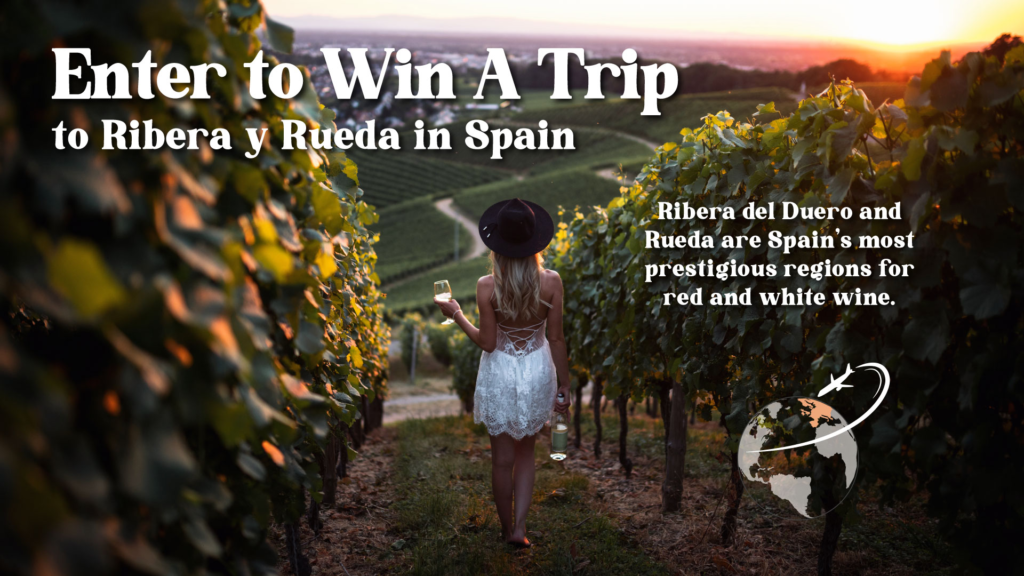
Enter to Win a Trip to Spain’s Most Prestigious Wine Regions.
Laura Werlin is a James Beard Award-winning author. Follow her on Instagram @cheezelady.
